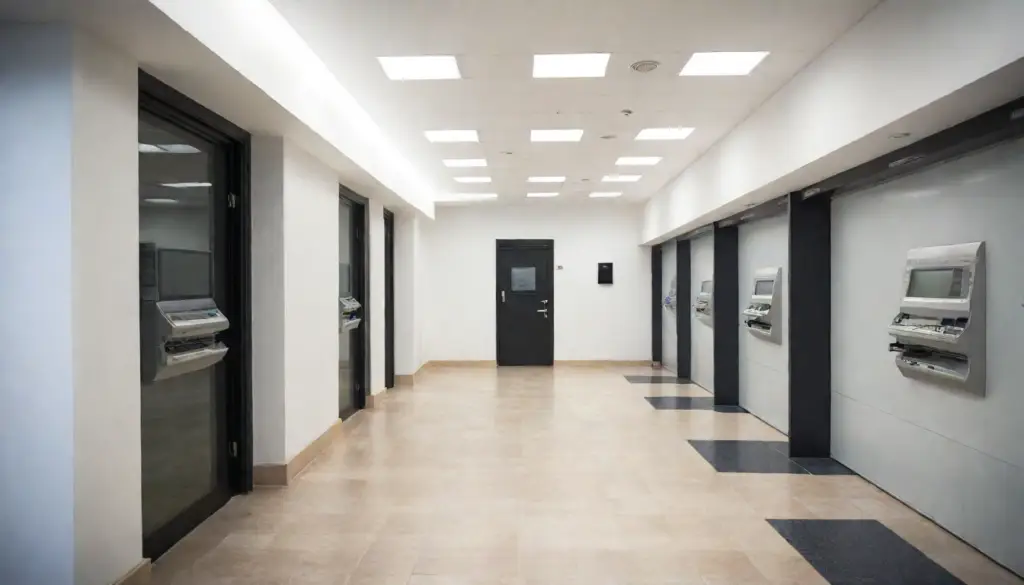Financial institutions’ branch strategy is rapidly evolving. While some FIs are converting their spaces into bank branches of the future, others are closing branches to focus on their digital footprint. Some financial institutions are doing a mix of both. Regardless of strategy, these changes require forethought and, often, technology decommissioning.
Decommissioning a bank branch is certainly not an easy task, but it’s imperative to do it correctly. Today, we’ll share everything you need to know about how to close a branch of a financial institution with technology in mind.
Why Bank Branches Close
Reductions in business are certainly a reason for branch closures, but it’s not always that simple. As technology continues to advance and seep into every industry, consumer demands are rapidly changing. In response, many financial institutions close in-person branches.
The actual marketplace sends mixed messages to financial institutions. Foot traffic is down, but younger consumers are still interested in visiting their banks. Despite the drop in cash spending, ATMs are still popular, with almost half of Gen Z planning to open a deposit account.
Here are some of the reasons for decommissioning banks:
The Surge of Online Banking
The Internet has drastically changed both consumer and retail banking. Even by 2017, 40 percent of Americans were managing their banking online. In response to consumer behavior, financial institutions are dedicating more efforts to online channels. As banks leverage more mobile technology, they are focusing more on online methods than in-person branches. Many banks decide that decommissioning some of their branches will provide them with more capital for digital channels.
Ending of Lease Terms
When lease terms end, financial institutions must decide whether or not to re-sign. Some banks opt to decommission rather than extend lease terms. The approach the financial institution takes depends on the specifics of the organization. Some may choose to sell equipment, while others may store it.
Acquisitions or Mergers
Mergers and acquisitions are quite common in the financial industry. When banks join, they are likely to decommission some locations, while potentially opening new ones elsewhere. Joining forces allows banks to reduce overhead costs and better meet the needs of their customers.
Why Get Assistance When Decommissioning a Bank?
Decommissioning a bank is no easy task, and financial professionals have quite a few considerations to take into account. Decommissioning a bank also requires you to decommission servers and data centers. Even for IT teams, undertaking bank decommissioning is a lofty challenge.
Getting assistance with bank decommissioning can help your organization:
- Avoid downtime. A wrong move during decommissioning could lead to interruption of your services. Downtime is lost revenue that you can avoid with professional assistance.
- Preserve data/avoid data loss. Before removing any technology, you must ensure that crucial data is secured and backed up. Additionally, you don’t want your decommissioning to affect any other branches or your digital platforms.
- Save time and speed up the process. Professionals know how to most effectively handle decommissioning. They can handle the project in a fraction of the time.
- Stay organized. Even for knowledgeable IT teams, decommissioning is a huge project. It involves many crucial, moving parts.
- Prevent confusion. Working with an expert ensures clear organization and can help prevent confusion among your team. These professionals can also answer any questions you may have along the way and explain the importance of certain steps.
Decommissioning with an Expert
Here’s what you can expect when you work with a professional service agency for bank decommissioning:
Discovery Call
When the time comes to decommission a bank, your discovery call is the first step. During the call, the team will ask about your overall plans, goals, timeline, and number of branches. The discovery call is the perfect time to learn more about the decommissioning service and how it can help your bank. It also gives the experts a good overview of your specific situation and how best to approach it.
Make a Plan for The Equipment
Banks are filled with all kinds of equipment, and when they are decommissioned the equipment needs somewhere to go. After your discovery call, it’s time to decide where the equipment should go. The primary options are:
- Other branches. If you are only decommissioning some of your branches, there’s a good chance that the existing branches could make good use of the equipment.
- E-Waste Facility. An e-waste provider accepts almost all electronics and has multiple paths for unwanted devices. Outdated or defective equipment is recycled for valuable materials. Devices that still work but are simply unwanted can be spruced up and re-marketed on your behalf. Depending on the quantity, you may even get money back for these sales.
- Best practices for equipment life span—we can help you decide if your equipment has more life in it or when to plan for its replacement during this process.
Approve the Scope of Work
The next part of the bank decommissioning process is to create a scope of work. This is where the experts will outline exactly what the project will entail. This is a detailed description of the project steps. The scope of work is a crucial part of project delivery, and both parties must sign off on it to continue.
Along with the scope of work will be a custom quote. The service-level agreement (SLA) will specify the services and the specific costs associated with them. This way, you can see what you are paying for. The SLA is important for clarity and transparency, helping to avoid confusion.
Decommissioning Execution
The last step is to execute the bank decommission. For this stage, the decommission specialists will move all of your technology, ship its new location, and clean up extra cords and accessories. Technology included in the decommission consists of:
- Servers
- UPS—a power source/generator for the servers
- Teller station
- Check scanner
- Microphone
- Receipt
- Passbook
- PCS
- Keyboards
- Mice
- Pin pads
- Sig pads
- ATMs
- Anything with a plug!
When you partner with a decommissioning expert, the process is seamless. It’s quick and efficient, saving your entire organization a ton of time.

Learn How We Can Help
If you decide decommissioning your branch is the best decision, working with a professional can greatly help. You need a trusted professional that will deliver exemplary service for an affordable price. When choosing a decommissioning expert, always look for experience. Decommissioning a bank involves even more than decommissioning a server or data center, as those are just part of banks. It’s critical to look for an expert with bank decommissioning experience. Learn how we can help with bank decommissioning by contacting us.





